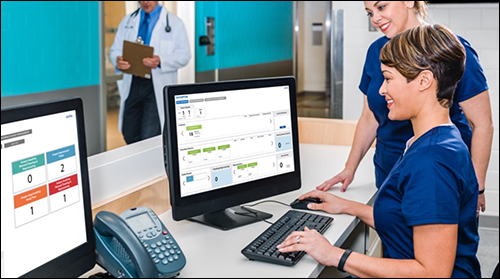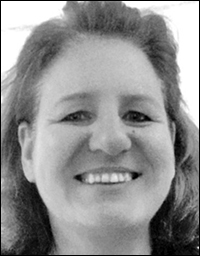Olympus Medical Systems Group, a division of Olympus America, has released a solution known as Unifia that employs radio frequency identification to track the location, history and status of endoscopes used during medical and surgical procedures. The system is designed to help health-care providers manage data regarding the use of endoscopes on patients, as well as the devices’ processing and storage. The system serves as a step beyond the medical device company’s other RFID solutions that track only the leak-testing and processing of endoscopes prior to their use on patients (see Olympus Automates Its Endoscope Tester Via RFID).
Unifia consists of a software platform designed to manage data about each Olympus endoscope, as well as handheld readers that scan RFID tags or bar codes. The software captures, interprets and stores the RFID read data, thereby creating a history of where each endoscope has been, when it was used and on which patient. It will also note which processing steps were completed or missed. That information provides hospitals with greater infection protection for patients, the company says, as well as an asset-management tool to ensure that endoscopes are available when needed.
Two health-care companies have been trialing the technology since February of this year. Those companies have asked to remain unnamed.
The Olympus Medical Systems Group is the largest provider of gastroenterology and respiratory endoscopes in the United States. The company has more than a decade of experience with RFID; since 2005, each of the firm’s Evis Exera II and Evis Exera III endoscopes come with a built-in passive high-frequency (HF) 13.56 MHz RFID tag compliant with the ISO 15693 standard. Additionally, in 2010, it offered RFID-enabled processing units to disinfect endoscopes after they are cleaned, along with its ALT-Pro leak-testing system.
Since about 2015, says Carolyn Klimas, Olympus’s executive director of marketing, the company has been developing a more holistic solution using RFID technology that could resolve two problems for health-care providers: safety and asset management. In the case of safety, the system is designed to automatically collect data in order to track endoscopes so that they are not used until the proper procedures are completed within an allowed amount of time.
“We did a lot of infection-control research” as part of the system development, Klimas says, and found “that the required documentation process can be a very laborious process for technicians.” Therefore, the company sought to develop a system that would make the tracking of endoscopes less manual.
With the technology in place, a hospital or clinic can enable business analysis to better understand inventory levels and when they should be adjusted. To that end, the software platform feeds the collected RFID data into Unifia’s Infection Prevention module and its Materials and Asset Management systems.
A user first places an RFID-enabled endoscope into the storage cabinet, where it is then ready for use. He or she employs the handheld scanner, which is about the size of an Apple iPhone and was designed by Olympus and built by a third-party manufacturer. That device can scan the built-in RFID chip on the endoscope to capture the unique ID number encoded on that chip. The scanner forwards that data to the software, residing on a local server, via a Wi-Fi connection. The software then updates the scanner’s status as being cleaned, processed and ready for use in the cabinet. The individual can also scan or read his or her badge or wristband in order to link its ID number and date stamp with that action.
When an endoscope is required for a procedure, such as a colonoscopy, the same RFID reading action is completed, and software confirms that the device is being removed by a specific individual for use. If the endoscope has not been fully processed, or if too much time has elapsed since processing, the user will receive an alert on the scanning device, where management can view that event in the software. This puts steps in place to help reduce the risk that a patient will be exposed to any endoscopes that might be contaminated.
At the procedure room, another scanner is used to indicate that the room and endoscope are in use. Meanwhile, the ID number on a patient’s wristband is stored along with the endoscope data, as well as the badge or wristband ID of the health-care provider conducting the procedure. A bar-code scanner can also capture the name of the health-care provider conducting the procedure.
Once the endoscope is removed from the procedural suite, it is transferred to a separate area, where it is put through various processing steps. An employee uses a scanner at the processing center to track and document the process. This enables the health-care facility to confirm that the endoscope was leak-tested, cleaned and processed (processing consists of a high-level disinfection of the device).
The Unifia software not only provides real-time alerts in the event that an endoscope is not following the proper protocol prior to reuse, but also collects historic data so that a user can be informed if the endoscope may need to be sent out for servicing, based on the number of times it has been used. (Olympus also offers servicing.)
The system provides multiple benefits, Klimas reports, adding, “The value depends on who you talk to.” Technicians who work in the lab find that the technology makes their lives easier, she says. With the manual method of tracking endoscope processing, they often must use paper and pen to manually track when each endoscope is processed, which requires that they take off gloves, fill out paperwork and hope that the paperwork does not become wet, which can smudge the data written on the paper. Not only does the system eliminate the need for paper and pen, it also creates a record of who carried out which task, and when, providing documented proof of the services provided.
For hospital or clinic management, the system provides proof that safety procedures were followed, while also enabling them to manage their assets more efficiently. “One of the benefits is the decision-making Unifia provides” to hospital managers, Klimas says. For instance, if managers notice that endoscopes are being delayed in the processing room, or are spending too much time in the cabinet, that problem can be addressed. They can view where bottlenecks occur, as well as identify when insufficient or excessive endoscopes may be on site.
Customers can purchase the solution outright, including the handheld scanners, Klimas explains, or they can pay a monthly fee for the service. In the future, she adds, the software may be provided on a cloud-based server.



